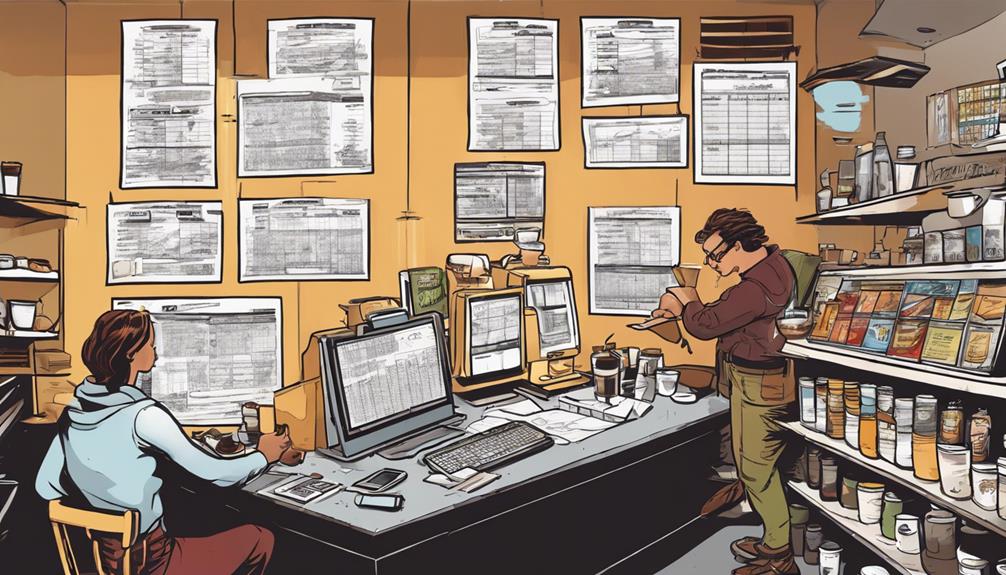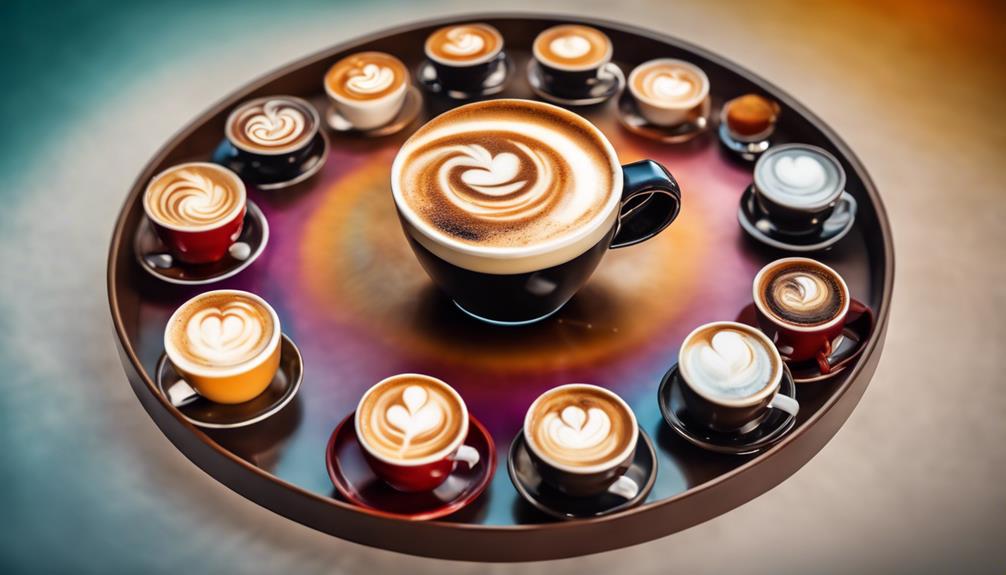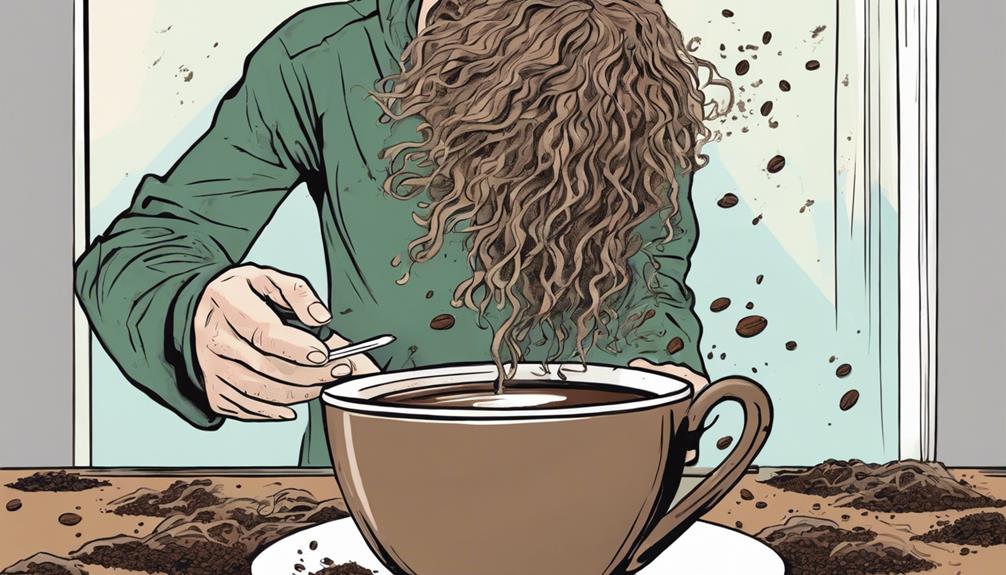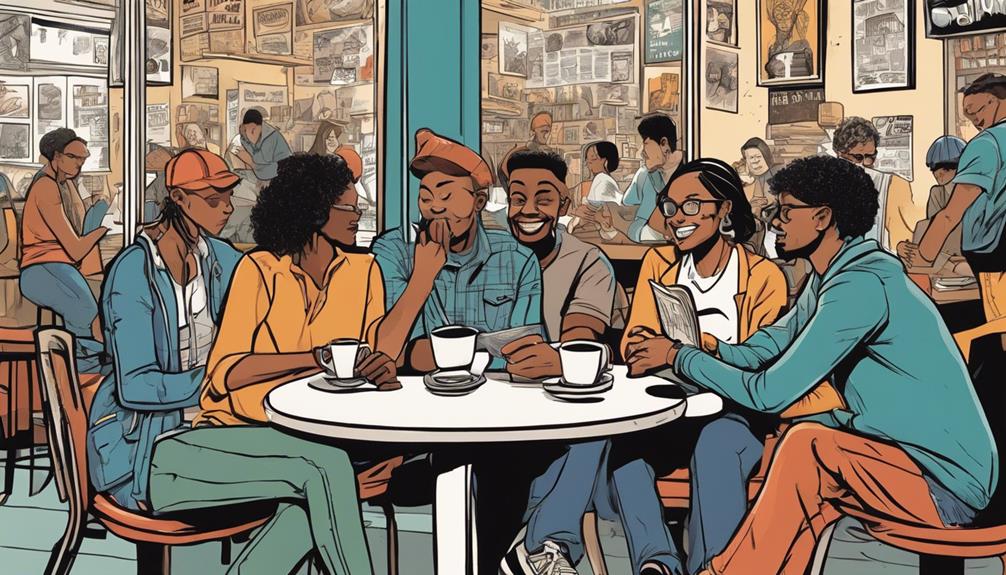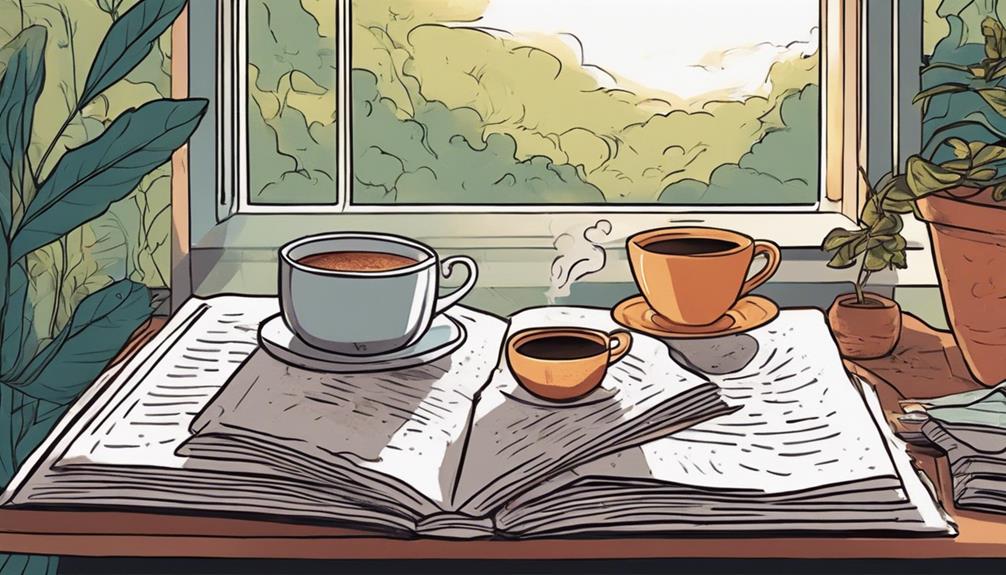When planning your budget for your coffee shop, it’s important to first identify startup costs. These costs include equipment, real estate, and operational expenses. Create a detailed budget and keep track of expenses accurately. Allocate funds strategically, making essential costs like marketing a priority. Make sure to also set aside an emergency fund. Utilizing economical strategies such as starting small or using shared spaces can be beneficial. Keep personal and business finances separate for clarity. Have a contingency plan in place to prepare for any cost fluctuations. Understanding these financial aspects is crucial for achieving success!
Key Takeaways
- Identify initial investment needs based on cost breakdown.
- Allocate funds strategically for equipment, real estate, and working capital.
- Prioritize essential costs and marketing expenses.
- Separate personal and business finances for clarity.
- Prepare for budget evolution with contingency planning.
Coffee Shop Budget Essentials
When budgeting for opening a coffee shop, you must carefully consider the important expenses that will impact your startup costs. Coffee shop equipment, such as espresso machines, grinders, and brewing equipment, can be a significant initial investment.
Real estate expenses, including lease or purchase costs for your shop's location, are key to factor into your budget. Working capital is crucial for covering operational expenses like rent, utilities, and employee wages until your business becomes profitable.
Staffing and training costs for baristas and other employees are necessary for providing excellent customer service.
Budgeting and financial planning are essential to ensuring you have enough funds to cover all startup costs and prevent cash flow issues down the line. It's vital to have a clear understanding of operational expenses such as supplies, marketing, and maintenance, to avoid financial challenges post-opening.
Seeking advice from professionals in the coffee industry, like Reverie Coffee Roasters, can provide valuable insights for successful budgeting and financial management.
Understanding Startup Costs

Understanding the startup costs for opening a coffee shop is important for effective financial planning and budgeting. When creating your Coffee Shop Budget, it's vital to take into account the initial investment required to cover costs of opening, such as equipment, permits, and initial inventory. These costs can vary from $20,000 to $400,000 depending on various factors.
Additionally, operational costs, including rent, utilities, insurance, and maintenance, should be factored into your budget around monthly expenses that can impact your budget significantly. Renting a space can vary from $3,500 to $12,000 monthly, while purchasing a property may cost between $150,000 to $700,000. Marketing expenses are also important to take into account as they can have a significant impact on the total startup costs.
Lastly, it's crucial to allocate funds for creating a contingency fund to handle unexpected emergencies that may arise during the setup phase and ongoing operations of your coffee shop.
Developing a Budget Proposal
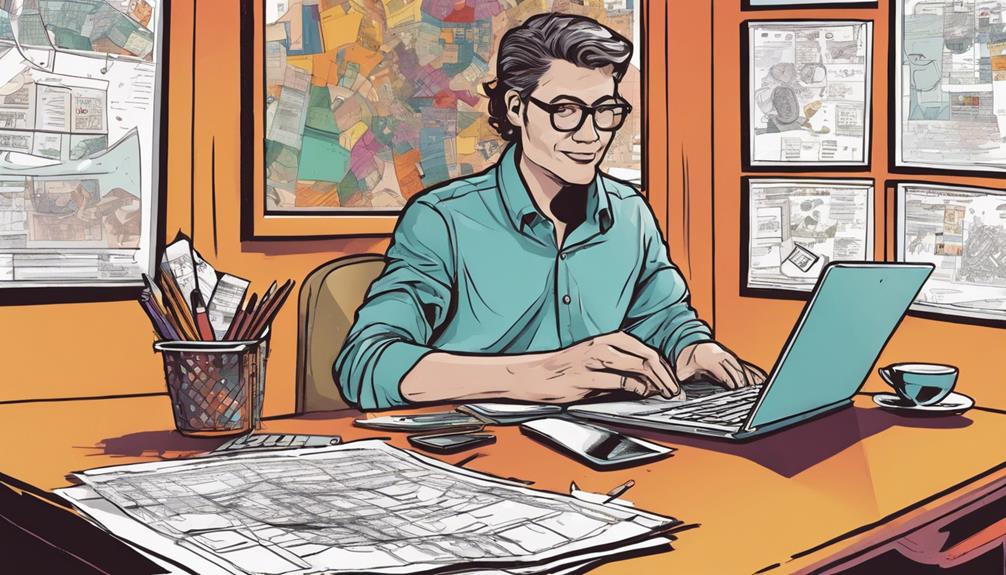
Now, let's focus on developing a budget proposal for your coffee shop.
You need to strategize how to allocate your budget effectively, track expenses diligently, and plan for flexibility in your budget.
Budget Allocation Strategy
To develop a budget proposal for your coffee shop, start by clearly outlining all expenses associated with your business concept. Here is a strategic budget allocation plan to guide you through this process:
- Prioritize Essential Costs:
Allocate a significant portion of your budget to critical expenses such as rent, utilities, equipment, and initial inventory to ensure smooth operations from the start.
- Invest in Quality Coffee:
Dedicate a portion of your budget to sourcing high-caliber coffee beans and other supplies to attract and retain customers with exceptional products.
- Marketing and Branding:
Allocate funds for marketing strategies and branding efforts to create awareness and establish a strong presence in the competitive coffee shop market.
- Employee Training and Development:
Set aside a budget for training programs and ongoing skill development for your staff to deliver exceptional customer service and maintain a positive work environment.
Expense Tracking Methods
Consider implementing a detailed expense tracking system using a spreadsheet to effectively categorize all costs associated with opening your coffee shop.
By breaking down expenses into categories such as equipment, rent, utilities, and permits, you can guarantee accurate tracking of all financial outflows.
This method will enable you to create a thorough budget proposal that reflects both tracked expenses and anticipated costs.
Regularly updating this proposal as new expenses arise or estimates change is vital to maintaining financial discipline and effective cost management.
Keep a close eye on budget variances to identify any deviations from the planned expenditure, allowing you to make necessary adjustments promptly.
With accurate tracking and categorization of expenses through a detailed spreadsheet, you can establish a solid foundation for managing your coffee shop's finances efficiently.
Budget Flexibility Planning
Develop a detailed budget proposal for your coffee shop by clearly outlining all expenses and determining the total business concept cost. Utilize a thorough coffee shop business plan to organize and adjust your budget as you progress.
Here are four key points to keep in mind when planning your budget flexibility:
- Be transparent about all costs associated with starting a coffee shop to guarantee accuracy in your budget proposal.
- Stay faithful to your estimated costs and sales projections to avoid financial surprises down the road.
- Allocate funds for categories such as legal fees, equipment, utilities, and inventory to cover all essential expenses.
- Take into account the time required to open your coffee shop and plan accordingly for a smooth financial progression.
Managing Financial Resources
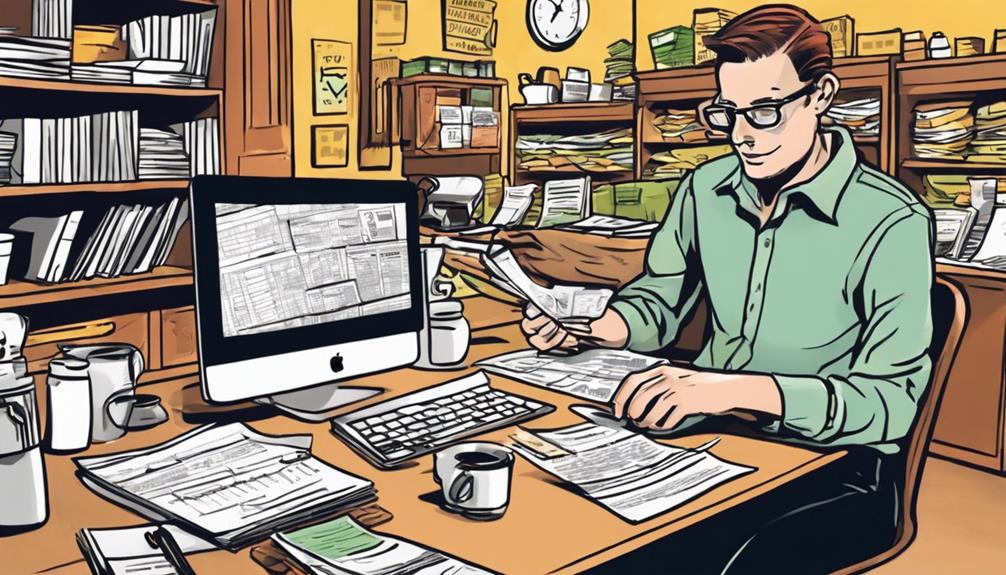
When managing financial resources for opening a coffee shop, prioritize allocating funds strategically to cover equipment, seating, ambiance, food equipment, and operational essentials. To give you a clearer picture of where your budget should be allocated, refer to the table below:
| Category | Estimated Costs Range | Description |
|---|---|---|
| Equipment Costs | $5,000 – $20,000 | Includes espresso machines and quality grinders |
| Seating and Ambiance | $10,000 – $15,000 | Enhance customer experience with comfortable seating |
| Food Equipment | $3,000 – $7,000 | Essential equipment like ovens and refrigeration |
Coffee Shop Equipment Expenses
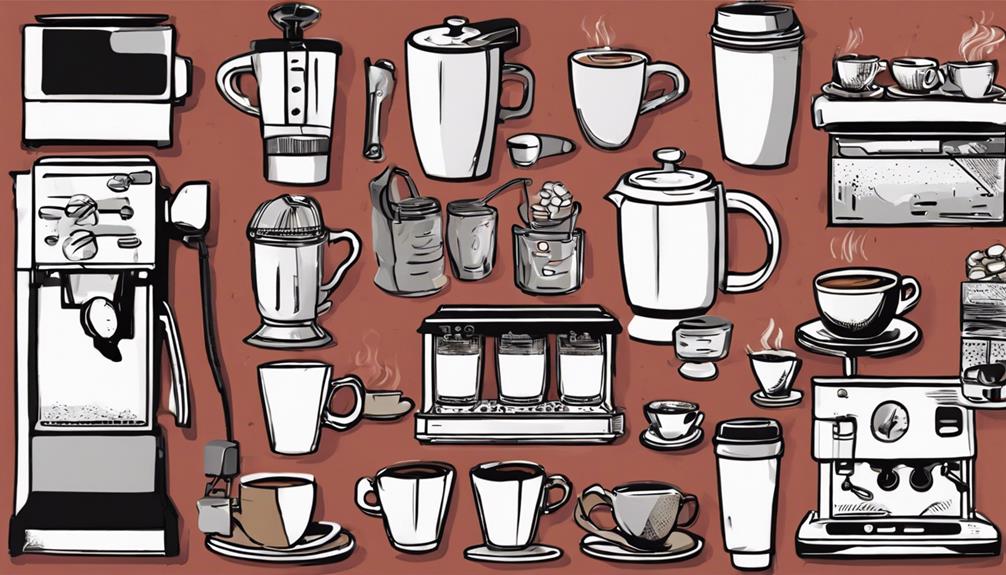
To effectively equip your coffee shop for success, it's important to carefully budget for the necessary equipment expenses, including commercial espresso machines, quality grinders, seating, ambiance enhancements, and essential food equipment.
Here's a breakdown of the costs to ponder:
- Commercial Espresso Machine: Budget between $5,000 to $20,000 for a top-quality espresso machine to maintain consistency in your coffee offerings.
- Quality Grinders: Allocate $500 to $2,500 for grinders that will assist you in delivering freshly ground coffee to your customers.
- Seating and Ambiance: Enhance the customer experience by investing $10,000 to $15,000 in creating a cozy and inviting atmosphere with comfortable seating.
- Essential Food Equipment: Set aside $3,000 to $7,000 for convection ovens, refrigeration units, and other necessary equipment to expand your menu offerings.
Remember to also factor in additional equipment like furniture, refrigerators, freezers, and beverage equipment to meet your operational needs effectively.
Pre-Opening Financial Preparation
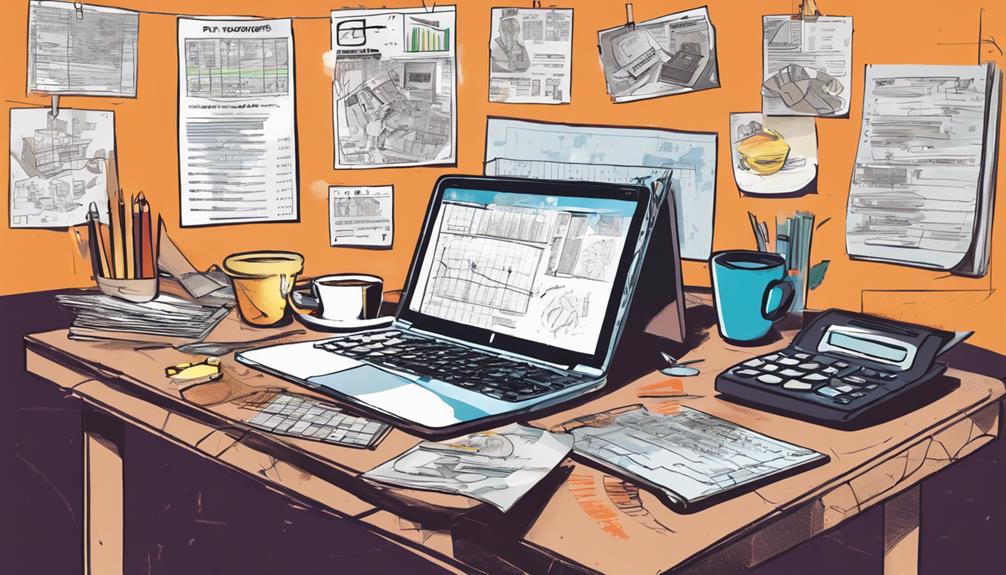
When preparing financially for your coffee shop's grand opening, it's vital to break down costs meticulously, plan for unexpected expenses, and strategize how to allocate your resources efficiently.
By understanding the essentials of cost breakdown, creating a financial buffer, and implementing a solid resource allocation strategy, you can better navigate the pre-opening financial landscape.
Stay proactive, plan wisely, and be prepared for the financial journey ahead to guarantee a successful coffee shop launch.
Cost Breakdown Essentials
Essential to the pre-opening financial preparation for a coffee shop is a detailed breakdown of costs to guarantee a successful launch. To ensure a smooth coffee shop launch, consider the following cost breakdown essentials:
- Cost to Open: Pre-opening expenses for a coffee shop can vary widely, typically ranging from $20,000 to $120,000. It's important to have a clear understanding of the initial investment needed for a successful start.
- Inventory Costs: Inventory costs encompass a variety of items such as coffee beans, plates, utensils, and office supplies. Allocating funds for inventory is crucial to have everything in place when opening your coffee shop.
- Training Costs: Investing in staff training and additional inventory like cups and sleeves is vital for a well-prepared launch. Properly trained staff can enhance customer experience and operational efficiency.
- Merchandise Costs: Including merchandise costs in your financial planning is essential for branding your coffee shop and creating a unique identity in the market. Allocating funds for merchandise can help attract customers and build brand loyalty.
Financial Buffer Planning
Consider allocating a financial cushion of at least 10-20% of your total budget to prepare for unforeseen costs during the pre-opening phase of your coffee shop. This financial safety net is essential for addressing unexpected expenses such as permit delays, equipment malfunctions, or construction setbacks.
By having a financial cushion in place, you can mitigate risks and guarantee that you have enough capital to navigate any financial challenges that may arise before your coffee shop opens. Anticipate the need for extra funds for marketing, training, or other unforeseen expenses to maintain financial stability during this critical phase.
Preparing a financial cushion demonstrates prudent financial planning and helps safeguard the success of your coffee shop. It's a proactive approach that can provide you with peace of mind and a solid foundation as you work towards opening your coffee shop.
Resource Allocation Strategy
Implementing a strategic resource allocation plan is essential for effectively managing pre-opening financial preparations for your coffee shop. When allocating resources, consider the following:
- Prioritize Pre-Opening Expenses:
Allocate funds for equipment, permits, and initial inventory based on detailed cost breakdowns to secure a smooth start.
- Cover Essential Costs:
Implement a resource allocation strategy to manage construction costs, real estate expenses, and working capital requirements efficiently.
- Prepare for the Unexpected:
Set aside a financial buffer to mitigate risks during the pre-opening phase and handle unforeseen expenses effectively.
- Invest in Professional Services:
Consider hiring experts for design and construction services to enhance customer experience and operational efficiency, setting a strong foundation for your coffee shop's success.
Marketing and Branding Budgeting
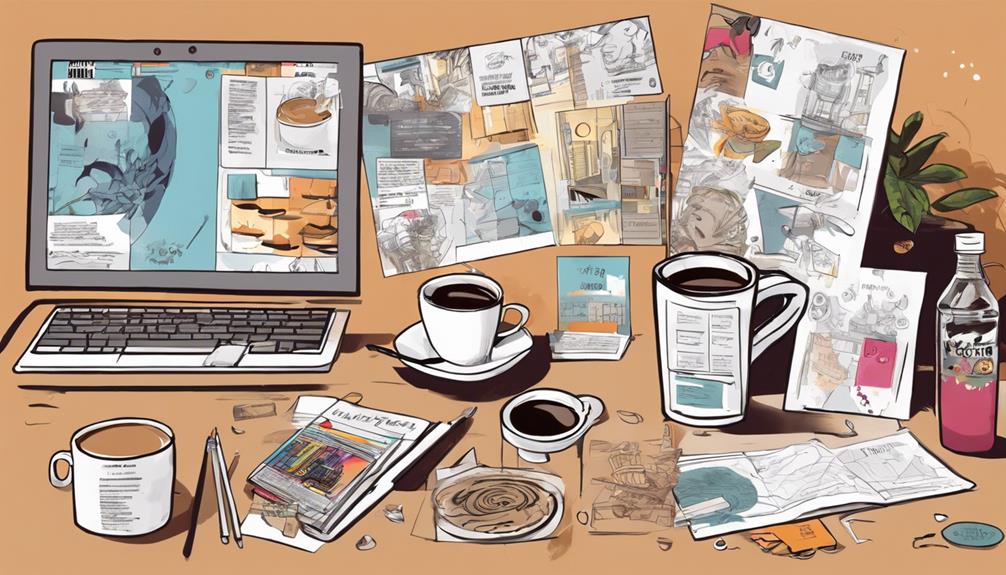
When budgeting for opening a coffee shop, allocating funds for marketing and branding is vital to establishing a strong brand identity and attracting customers.
Marketing and branding costs associated with starting a coffee shop typically range from 3-6% of total sales. This includes expenses for branding such as creating a logo, slogan, and color scheme, as well as branded coffee cups and bags to enhance brand awareness.
In addition to these branding costs, marketing expenses may involve utilizing social media platforms, PR services, and digital advertisements to promote the coffee shop effectively. It's important to invest in these strategies to build an emotional connection with customers through unique product offerings and community engagement.
Ensuring Emergency Funds

You must prioritize establishing an emergency fund ranging from $15,000 to $75,000 to safeguard against unforeseen financial challenges.
Regularly assess your financial statements to guarantee the fund's adequacy and accessibility in times of need.
Remember to diversify your menu offerings to maintain steady revenue streams and bolster financial stability.
Emergency Fund Importance
Establishing an adequate emergency fund is essential for guaranteeing the financial resilience of your coffee shop in the face of unpredictable cash flow situations. To emphasize the importance of an emergency fund, consider the following:
- Review Financial Statements: Regularly analyzing your financial statements will help you determine the amount needed in your emergency fund.
- Diversify Menu Offerings: Expanding your menu offerings can create additional revenue streams, guaranteeing better financial stability during emergencies.
- Include Emergency Provisions in Business Plan: Guarantee your business plan includes strategies for obtaining loans or attracting investors to supplement your emergency funds.
- Utilize Tailored Financial Plans: Implement easy-to-use financial plans customized for coffee shop models to assure the availability of emergency funds when needed.
Fund Allocation Strategy
To secure the availability of emergency funds for your coffee shop, implementing a clear fund allocation strategy is important. Allocate a dedicated emergency fund ranging from $15,000 to $75,000 to cover unpredictable cash flow situations effectively. Establishing a robust fund allocation strategy guarantees that these emergency funds are readily available when needed.
Regularly reviewing financial statements is vital to assess the adequacy of your emergency fund and maintain business sustainability. By having a clear fund allocation strategy in place, you can mitigate financial risks and handle unexpected expenses that may arise in the coffee shop industry.
Additionally, consider diversifying your revenue streams and menu offerings to enhance financial resilience and secure long-term business success. Remember, a well-thought-out fund allocation strategy is key to safeguarding your coffee shop's financial stability and adapting to unforeseen challenges.
Contingency Planning Essentials
Developing a strong backup plan is crucial to secure the availability of emergency funds for your coffee shop. Here are some key essentials to keep in mind:
- Establish an emergency fund: Allocate between $15,000 to $75,000 to handle unpredictable cash flow situations that may arise in the future.
- Regularly review financial statements: Keep a close eye on your financial health and make necessary adjustments to guarantee business sustainability.
- Diversify menu offerings: Explore new menu items to attract a broader customer base and increase revenue streams.
- Develop a detailed business plan: Create a detailed plan outlining your financial projections for the next three years to secure loans or attract potential investors.
Opening a Coffee Shop Economically
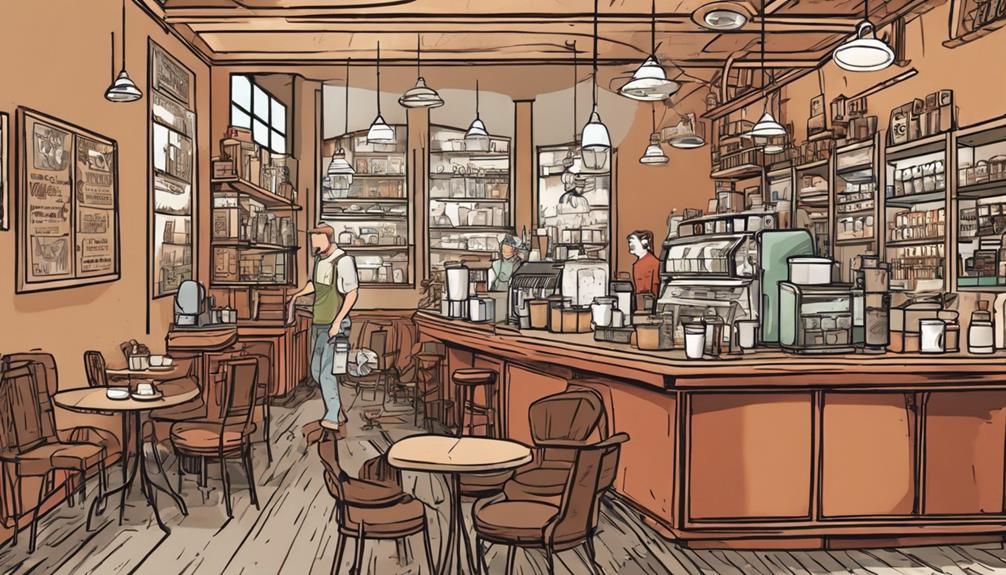
Consider starting small with a coffee kiosk or cart as a cost-effective way to open a coffee shop economically. By opting for budget-friendly equipment, you can reduce initial investment costs. Additionally, exploring shared spaces or pop-up locations can help lower real estate costs and minimize construction expenses.
Implementing efficient design strategies is key to maximizing space utilization and reducing renovation costs. Focus on offering essential menu items to streamline inventory costs and simplify operations. This approach not only helps in keeping your initial expenses under control but also allows you to test the market before committing to a larger investment.
Effective Business Planning
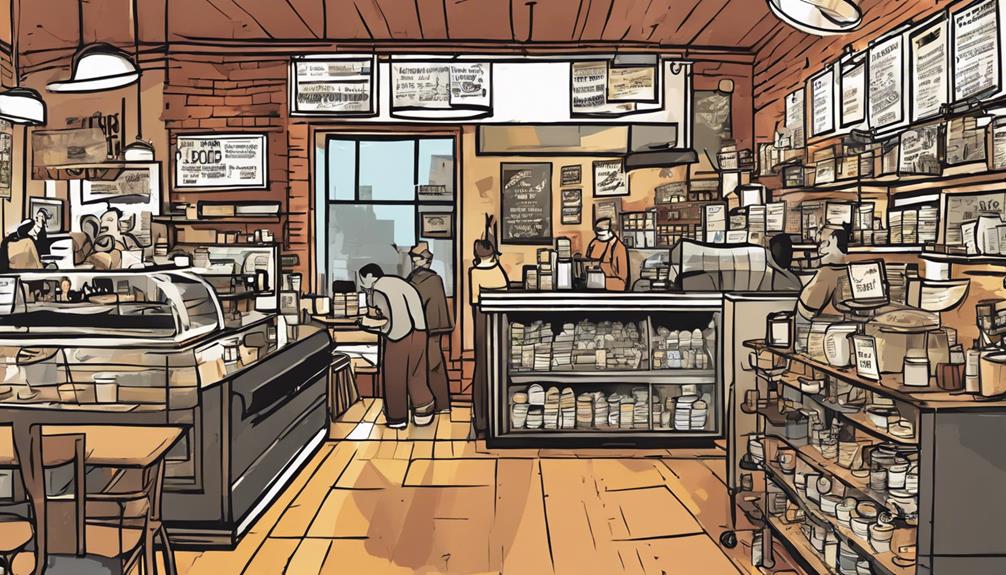
Create a detailed business plan outlining all expenses to effectively plan and adjust your budget for your coffee shop venture. To secure financial stability and success, follow these key steps:
- Lay out all expenses clearly in your business plan:
By comprehending your budgetary needs upfront, you can make informed decisions and avoid financial pitfalls down the line.
- Separate personal and business finances:
Keeping your finances distinct from the start will help you track expenses accurately and maintain financial openness.
- Prepare for budget evolution:
Recognize that as your coffee shop concept evolves, so will your expenses. Stay adaptable and be ready to adjust your budget accordingly.
- Allocate a financial buffer:
Include a cushion in your budget to cover unexpected costs and emergencies, securing that you have a safety net in place for any unforeseen expenses.
Frequently Asked Questions
How Much Money Should You Have to Open a Coffee Shop?
You should have a budget ranging from $60,000 to $2 million, depending on the type of coffee shop you plan to open. Costs vary widely, so make sure you research thoroughly and plan accordingly.
How Much Does It Cost to Set up a Coffee Shop?
Setting up a coffee shop can cost anywhere from $100,000 to $2 million. Expenses vary based on the type of shop you plan to open, with factors like equipment, pre-opening costs, and marketing contributing to overall expenses.
How Much Does It Cost to Start a Small Coffee Business?
Starting a small coffee business can cost between $20,000 to $400,000. Initial inventory, marketing expenses, rent, equipment, and operational costs play a role. Budget wisely, consider all factors, and plan for potential emergencies in your financial plan.
What Are the Monthly Expenses of a Coffee Shop?
Monthly expenses of a coffee shop vary based on rent, operational costs, maintenance, and marketing. It is important to budget for these factors, including contingency funds. Keep track of expenses to guarantee financial stability and business success.
Conclusion
So, now you know how to budget for opening a coffee shop! Remember, the key is to plan carefully and allocate your resources wisely. When deciding on suppliers and equipment, consider choosing options that are cost-effective but still high quality. Additionally, think about implementing budgetfriendly coffee tips, such as offering daily specials or creating unique promotions to attract customers while keeping costs down. By being mindful of your budget and finding creative ways to save money, you can set your coffee shop up for success from the very beginning.
Don't underestimate the importance of having a solid financial plan in place. By following these steps and staying on top of your budget, you'll be on your way to running a successful coffee shop in no time. Furthermore, having a well-thought-out coffee shop budget planning process will help you allocate funds efficiently and avoid any unnecessary financial strain. It will also allow you to make informed decisions about where to invest in your business, whether it’s in high-quality coffee beans, top-notch equipment, or skilled staff. By prioritizing your spending and tracking your financial progress, you can ensure the long-term success and sustainability of your coffee shop.
Good luck and happy brewing!
